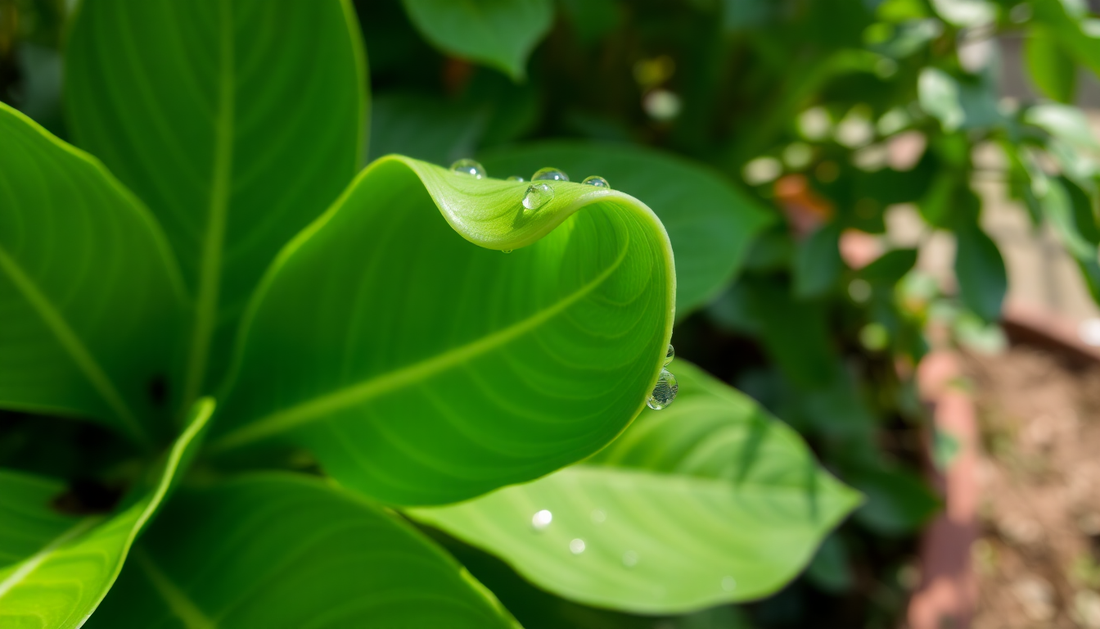
Why Are My Plant Leaves Curling? Common Causes & Fixes
As a plant enthusiast, you may have encountered the frustrating issue of your beloved houseplants' leaves curling. This common problem can be caused by a variety of factors, ranging from environmental stressors to pests and diseases. Understanding the underlying causes and taking the appropriate steps to address them can help you restore the health and vibrance of your plants.
In this comprehensive guide, we'll delve into the common reasons why plant leaves curl and provide you with practical solutions to get your greenery back on track. Whether you're a seasoned gardener or a novice plant parent, this information will empower you to diagnose and resolve the issue, ensuring your indoor oasis thrives.
Understanding Leaf Curling in Houseplants
Leaf curling is a natural response that plants exhibit when they are experiencing stress or environmental changes. The leaves may curl inward, downward, or even twist, depending on the specific cause. While it's not always a cause for alarm, it's essential to identify the underlying issue and address it promptly to prevent further damage to your plants.
Causes of Leaf Curling
-
Underwatering: When plants don't receive enough water, they will try to conserve moisture by curling their leaves inward. This is a defense mechanism to reduce water loss through transpiration.
-
Overwatering: Ironically, overwatering can also lead to leaf curling. When the roots are waterlogged, they can't effectively absorb oxygen, causing the plant to wilt and the leaves to curl.
-
Low Humidity: Dry air can cause the leaves to lose moisture, leading to curling. This is a common problem for many houseplants that thrive in more humid environments.
-
Temperature Stress: Extreme temperatures, whether hot or cold, can stress plants and cause their leaves to curl. Sudden temperature changes can also trigger this response.
-
Nutrient Deficiencies: Lack of essential nutrients, such as nitrogen, phosphorus, or potassium, can result in leaf curling and other growth abnormalities.
-
Pests and Diseases: Certain pests, like spider mites or aphids, can suck the sap from leaves, leading to curling. Some fungal infections can also cause the leaves to curl and distort.
-
Transplant Shock: When a plant is moved to a new pot or location, it can experience transplant shock, which can manifest as leaf curling.
-
Genetic Factors: Some plant varieties are simply more prone to leaf curling due to their genetic makeup, even when grown in optimal conditions.
Understanding the specific cause of leaf curling is crucial in determining the appropriate course of action to restore your plant's health.
Diagnosing and Treating Leaf Curling
To effectively address the issue of leaf curling, follow these steps to diagnose the underlying problem and implement the necessary solutions:
Step 1: Assess the Watering Needs
Examine the soil moisture level. If the soil is dry, the plant is likely underwatered, and you should water it thoroughly. Conversely, if the soil is consistently wet, the plant may be overwatered, and you should allow the soil to dry out slightly before watering again.
Step 2: Check the Humidity Levels
Measure the humidity levels in the room where your plant is located. If the air is too dry, consider using a humidifier, misting the leaves regularly, or grouping your plants together to increase the ambient humidity.
Step 3: Evaluate the Temperature
Ensure that your plant is not exposed to sudden temperature changes or extreme temperatures, either hot or cold. Adjust the environment accordingly to provide a stable, comfortable temperature for your plant.
Step 4: Inspect for Pests and Diseases
Carefully examine the leaves and stems for any signs of pests, such as spider mites, aphids, or scale insects. Look for discoloration, webbing, or other visible signs of infestation. If you suspect a pest problem, treat the plant with an appropriate insecticidal soap or neem oil.
Additionally, check for any signs of fungal infections, such as discoloration, spots, or mold. Treat the plant with a fungicide if necessary.
Step 5: Assess Nutrient Levels
If the leaves are curling and the plant appears stunted or discolored, it may be experiencing a nutrient deficiency. Apply a balanced, water-soluble fertilizer to provide the necessary nutrients.
Step 6: Consider Transplant Shock
If you've recently repotted or relocated your plant, the leaf curling may be a temporary response to the stress of the move. Be patient and provide extra care, such as maintaining consistent soil moisture and avoiding direct sunlight, until the plant adjusts to its new environment.
Step 7: Adjust Watering and Light Exposure
Once you've identified and addressed the underlying cause, continue to monitor your plant's watering needs and light exposure. Adjust these factors as needed to maintain optimal growing conditions and prevent future leaf curling.
Preventing Leaf Curling in the Future
To proactively avoid leaf curling issues, consider the following preventive measures:
-
Establish a Consistent Watering Routine: Develop a watering schedule that suits your plant's specific needs, and stick to it. Regularly check the soil moisture to ensure you're not under- or overwatering.
-
Maintain Proper Humidity Levels: Use a humidifier, group plants together, or mist the leaves regularly to keep the air around your plants moist.
-
Provide Appropriate Lighting: Ensure your plants are receiving the right amount of light, whether it's direct sunlight or indirect, depending on their specific requirements.
-
Fertilize Regularly: Apply a balanced, slow-release fertilizer to provide your plants with the necessary nutrients for healthy growth and development.
-
Monitor for Pests and Diseases: Regularly inspect your plants for any signs of pest infestations or fungal infections, and take immediate action to address them.
-
Acclimate Plants Gradually: When introducing a new plant to your home or moving an existing one to a different location, do so gradually to minimize the risk of transplant shock.
By following these preventive measures and addressing any leaf curling issues promptly, you can maintain the health and vibrance of your indoor plant collection, creating a thriving and beautiful indoor oasis.







No comments